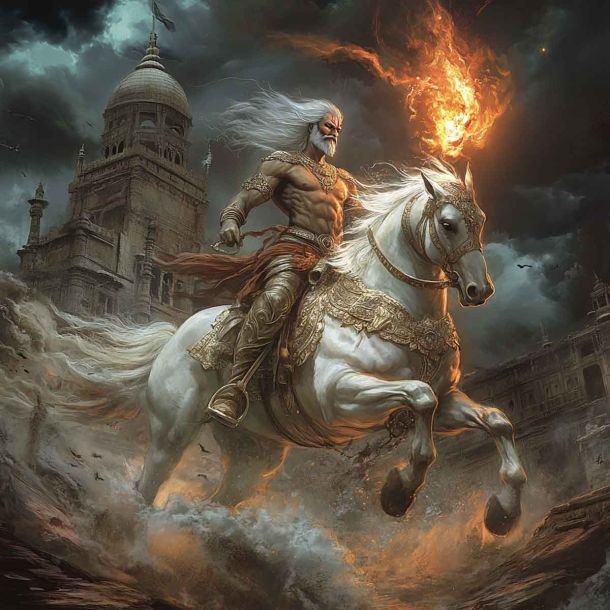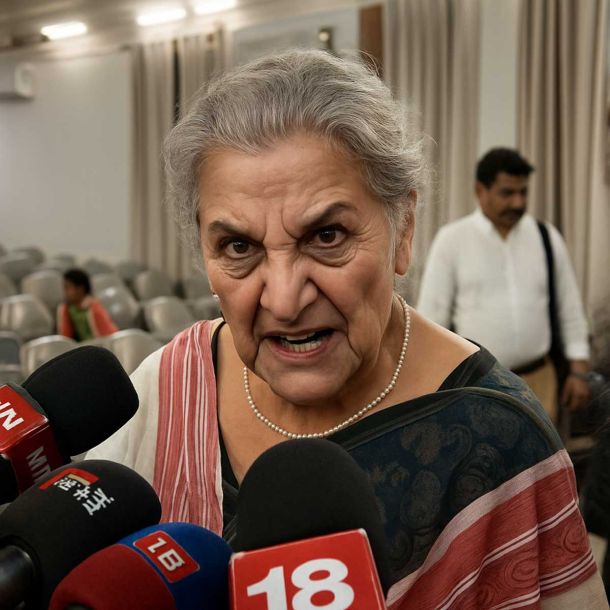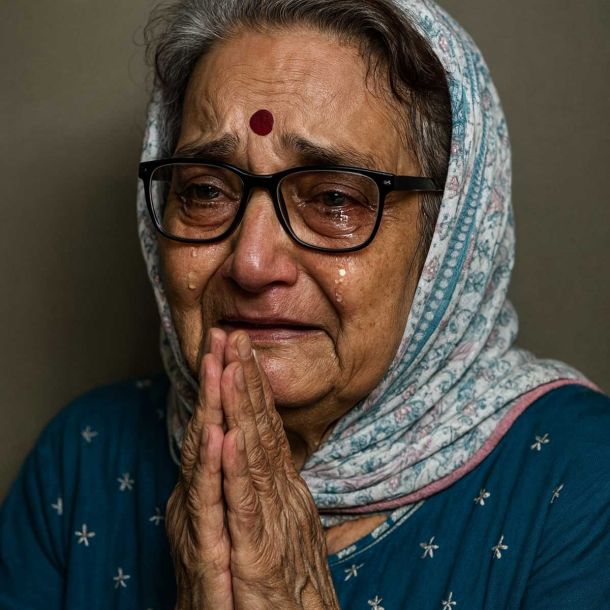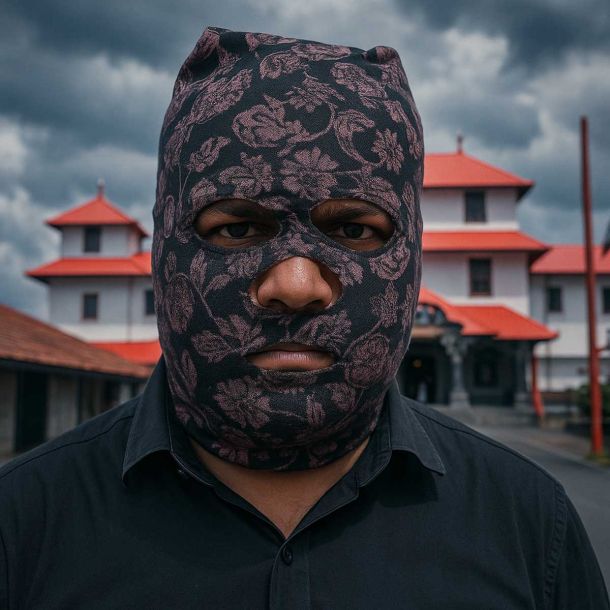More Coverage
Twitter Coverage
Satyaagrah
Written on
Satyaagrah
Written on
Satyaagrah
Written on
Satyaagrah
Written on
Satyaagrah
Written on
Join Satyaagrah Social Media
"Soul has this proof of divinity: that divine things delight it": Tungnath Mandir - highest of the Paanch Kedar and one of the highest Shiva Temples in the world lies at an altitude of over 12000 ft. with its origin dating back to the time of Mahabharata
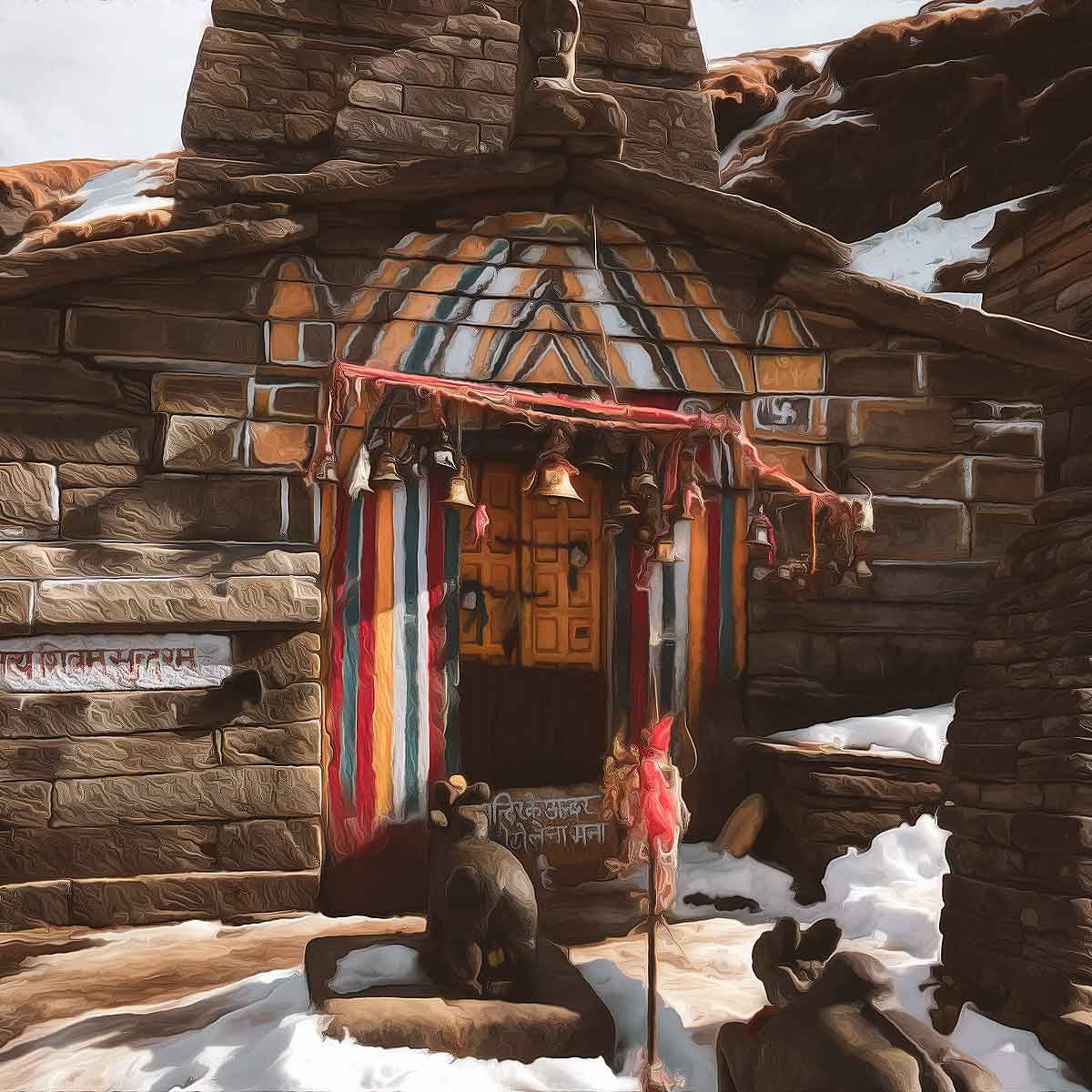
Tungnath is one of the highest Shiva temples in the world and is the highest of the five Panch Kedar temples located in the Rudraprayag district, in the Indian state of Uttarakhand. The Tungnath (literal meaning: Lord of the peaks) mountains form the Mandakini and Alaknanda river valleys.
It is located at an altitude of 3,690 m (12,106 ft), and just below the peak of Chandrashila. It has a rich legend linked to the Pandavas, heroes of the Mahabharata epic. Tungnath is the highest temple dedicated to Lord Shiva in the world. It is a part of the Panch Kedar pilgrimage, which includes four other temples - Kedarnath, Rudranath, Madhyamaheshwar, and Kalpeshwar. Tungnath is also one of the five temples of the Panch Kedar, and it is believed that the arm of Lord Shiva emerged here.
|
Legend
According to Hindu legends, Shiva and his consort, Parvati both reside in the Himalayas: Shiva resides at Mount Kailash. Parvati is also called Shailaputri, which means 'Daughter of the Mountain'. Many folk legends related to the Garhwal region, Shiva, and the creation of the Panch Kedar temples are narrated.
A folk legend about Panch Kedar relates to the Pandavas, the heroes of the Hindu epic Mahabharata. The Pandavas defeated and slayed their cousins — the Kauravas in the epic Kurukshetra war. They wished to atone for the sins of committing fratricide (gotra hatya) and Brāhmanahatya (killing of Brahmins — the priest class) during the war. Thus, they handed over the reins of their kingdom to their kin and left in search of Shiva to seek his blessings. First, they went to the holy city of Varanasi (Kashi), believed to be Shiva's favorite city and known for its Kashi Vishwanath Temple. But, Shiva wanted to avoid them as he was deeply incensed by the death and dishonesty at the Kurukshetra war and was, therefore, insensitive to Pandavas' prayers. Therefore, he assumed the form of a bull (Nandi) and hid in the Garhwal region.
Not finding Shiva in Varanasi, the Pandavas went to Garhwal Himalayas. Bhima, the second of the five Pandava brothers, then standing astride two mountains started to look for Shiva. He saw a bull grazing near Guptakashi (“hidden Kashi” — the name derived from the hiding act of Shiva). Bhima immediately recognized the bull to be Shiva. Bhima caught hold of the bull by its tail and hind legs. The bull went through various places, and his body parts fell at different locations. Tungnath is believed to be the place where his arm fell, and thus, it became a sacred shrine.
Bull-formed Shiva disappeared into the ground to later reappear in parts, with the hump raising in Kedarnath, the arms appearing in Tungnath, the face showing up at Rudranath, the nabhi (navel) and stomach surfacing in Madhyamaheshwar and the hair appearing in Kalpeshwar. The Pandavas pleased with this reappearance in five different forms, built temples at the five places for venerating and worshipping Shiva. The Pandavas were thus freed from their sins.
A variant of the tale credits Bhima for not only catching the bull but also stopping it from disappearing. Consequently, the bull was torn asunder into five parts and appeared at five locations in the Kedar Khand of Garhwal region of the Himalayas. After building the Panch Kedar Temples, the Pandavas meditated at Kedarnath for salvation performed yagna (fire sacrifice), and then through the heavenly path called the Mahapanth (also called Swargarohini), attained heaven or salvation. The Panch Kedar Temples are constructed in the North-Indian Himalayan Temple "Katyuri" architecture with the Kedarnath, Tungnath, and Madhyamaheshwar temples looking similar.
After completing the pilgrimage of Shiva's darshan at the Panch Kedar Temples, it is an unwritten religious rite to visit Vishnu at the Badrinath Temple, as a final affirmatory proof by the devotee that he has sought blessings of Shiva.
Legend also states that Rama, the central character of Ramayana, meditated at the Chandrashila peak which is close to Tungnath, in India. It is also said that Ravana performed penance to Shiva, the lord of the peaks when he resided here.
|
Worship
The priest at this temple is a local Brahmin from Makkumath village, unlike the other Kedar temples where the priests are from South India, a tradition set by the eighth-century Hindu seer Sankaracharya. It is also said that the Maithani Brahmins of Makkumath Village officiate as priests at this temple. During the winter season, the temple is closed and the symbolic image of the deity and the temple priests are moved to Markandeshwar Temple in Makkumath village, which is 29km from here. It is near Duggalbitha 10 km (6 mi) before Chopta towards Ukhimath.
Architecture and Design
The temple is made of stone and has a unique architecture with a pyramid-shaped roof. The temple is small in size but is exquisitely carved, and the walls are decorated with intricate designs. The sanctum sanctorum of the temple has a small Shiva Linga made of black marble, which is believed to be self-manifested.
The temple is located amidst the picturesque mountains, and the surroundings are serene and peaceful. The trek to the temple is an experience in itself, as it passes through the lush green meadows and forests, providing a breathtaking view of the Himalayas.
|
Festivals and Celebrations
The temple is open to visitors from April to November, and during the winter months, the temple is closed due to heavy snowfall. The temple celebrates the Mahashivratri festival with great fervor, and devotees from far and wide come to seek the blessings of Lord Shiva.
The trek to Tungnath is also a part of the Char Dham Yatra, which is considered one of the most sacred pilgrimages in India. The Char Dham Yatra comprises of four holy shrines, including Gangotri, Yamunotri, Kedarnath, and Badrinath.
Geography
Tungnath is at the top of the ridge dividing the waters of the Mandakini River (raising from Kedarnath) from those of the Alaknanda River (raising above Badrinath). The Tungnath peak on this ridge is the source of three springs, which form the Akashkamini River. The temple lies about 2 km (1.2 mi) below the Chandrashila Peak (3,690 m (12,106 ft)).
The road to Chopta is just below this ridge and hence provides the shortest bridle approach path for trekking to the temple from Chopta, over a short distance of about 5 km (3.1 mi). From the top of the Chandrashila peak, picturesque views of the Himalayan range comprising snow peaks of Nanda Devi, Panch Chuli, Banderpoonch, Kedarnath, Chaukhamba, and Neelkanth on one side, and the Garhwal valley on the opposite side could be witnessed.
The valley between Chopta and Tunganath temple has wooded hills with rich alpine meadows with rhododendron coppices and also agricultural fields. The rhododendrons, when they are in full bloom during March, display dazzling colors ranging from crimson to pink. A high-altitude botanical station of Garhwal University is located here. Nearing the top of the temple, there is a forest resthouse at Dugalibitta, just opposite to the Kedarnath range of hills. The Kedarnath Wild Life Sanctuary, also called the Kedarnath Musk Deer Sanctuary, was set up in 1972 to preserve the endangered musk deer, which lies in the region, also has a musk deer breeding center at Kharchula Kharak near Chopta.
Climate
The climate is generally cool throughout the year. Summers are pleasant with average temperature hovering around 16 degrees Celsius during the day time. Winters are very chilly and the temperature drops below the freezing point very frequently. The best time to visit the temple is from April to September. Due to heavy snowfall, the Tungnath Temple remains closed for around 6 months during winter.
|
Trekking and access
The 5 km (3.1 mi) trek starts from Chopta (9,600 ft (2,926 m)), the nearest place on NH 58. Chopta is 23.9 km (15 mi) from Rudraprayag towards Karnaprayag and is reached from Rishikesh via Devprayag, Srinagar, and Rudraprayag.
Of all the Panch Kedar trek routes, the route to Tungnath is the shortest: only 5 km (3.1 mi) from Chopta (on the Ukhimath-Gopeshwar road) that can be covered in approximately 4–5 hours (depending on the trekker's physical ability). Trek is a steep climb (9,600–11,350 ft (2,926–3,459 m)), the trek path is stone paved with benches provided en route at intervals. The path is surrounded by scenic views and captivating flora and fauna on both sides.
Generally, the pilgrimage to Tunganath is undertaken as part of the Panch Kedar trekking covering all five temples over a 170 km (105.6 mi) route (road cum trek length) starting from Rishikesh in the order of Kedarnath, Tungnath, Rudranath, Madhyamaheswar, and Kalpeshwar. The few pilgrims who undertake this trekking pilgrimage to the shrine do so in the summer months (end of April or early May to October) as the temple remains snowbound and unapproachable. During this period even Chopta, the nearest road head remains deserted. But it is said that few adepts come to the area during the winter to avoid the pilgrims. The steep climb to Chandarshila is 2 km (1.2 mi).
The nearest airport is Jolly Grant, Dehradun (258 km (160 mi)). The nearest railway station is at Rishikesh (241 km (150 mi))
Conclusion
Tungnath Temple is a spiritual haven that offers a unique blend of adventure and devotion. It is a testimony to the rich cultural heritage of India and is an essential part of the Panch Kedar pilgrimage. The temple is not just a place of worship but also a place of peace and tranquility. The trek to Tungnath is a challenging yet rewarding experience that is sure to leave you spellbound. It is a must-visit destination for anyone seeking an adventure in the Himalayas or looking for spiritual solace.
Ravana Shila / Speaking Mountain
Ravana Shila is above Tungnath temple, there is a small temple which is known as Chandra Shila. Ravana Shila or Speaking Mountain has its own historical importance related to the Ramayana. After killing Ravana, Rama felt guilty for what he had done. He then started austerities for Shiva and requested Shiva to release him from the guilt of killing Ravana. During his penance, he built the Ramanathaswamy Temple in Rameshwaram, Tamil Nadu. The temple in Rameshwaram is one of the 12 Jyotirlingas.
References:
 Support Us
Support Us
Satyagraha was born from the heart of our land, with an undying aim to unveil the true essence of Bharat. It seeks to illuminate the hidden tales of our valiant freedom fighters and the rich chronicles that haven't yet sung their complete melody in the mainstream.
While platforms like NDTV and 'The Wire' effortlessly garner funds under the banner of safeguarding democracy, we at Satyagraha walk a different path. Our strength and resonance come from you. In this journey to weave a stronger Bharat, every little contribution amplifies our voice. Let's come together, contribute as you can, and champion the true spirit of our nation.
 |  |  |
| ICICI Bank of Satyaagrah | Razorpay Bank of Satyaagrah | PayPal Bank of Satyaagrah - For International Payments |
If all above doesn't work, then try the LINK below:
Please share the article on other platforms
DISCLAIMER: The author is solely responsible for the views expressed in this article. The author carries the responsibility for citing and/or licensing of images utilized within the text. The website also frequently uses non-commercial images for representational purposes only in line with the article. We are not responsible for the authenticity of such images. If some images have a copyright issue, we request the person/entity to contact us at This email address is being protected from spambots. You need JavaScript enabled to view it. and we will take the necessary actions to resolve the issue.
Related Articles
- Mamata Banerjee led Bengal govt orders to remove ‘unauthorised’ temples and shrines from public places: Asks state police to provide assistance to DMs of 8 districts for the same
- Temple land in Thiruvannamalai, once a sanctum of spirituality, now besieged by the rise of an ugly shopping complex, devotees decry the greed of @tnhrcedept officials, as heritage is bartered for commerce, endangering the venerable East Gopuram
- Hindus voluntarily removed gates of a temple extended outside legal limit ahead of anti-encroachment drive by the NDMC in Delhi’s Jahangirpuri: Gate was installed for security in a Muslim-dominated neighbourhood
- Major boost for tourism as Indian Railways set to roll out Vande Bharat trains to Khajuraho, a World Heritage Site in Madhya Pradesh: UNESCO-protected temples and monuments draws tourists from worldwide
- Blast from the past: why DMK government’s idea to melt temple gold is dangerous?
- Ahmad Abbasi, reportedly a chemical engineer from IIT Bombay tries to enter Gorakhnath Temple shouting ‘Allahu Akbar’, injures two cops with a sharp weapon: Uttar Pradesh
- An ancient Mata Tripur Sundari temple located in a remote forest area was burnt down in Kulgam: Jammu & Kashmir Police tries to downplay the event saying it was a minor fire caused by 'diyas/arti’
- "Abandoned homes become magnets for vandalism and crime": Tamil Nadu HRCE Board, trusted with the protection of temples is vandalizing temple sculptures in name of modern construction, greed for Civil Contracts resulted in shocking renovation works
- Madras High Court noted that 'tolerance is the hallmark of Hinduism, devotees could not be denied their right to worship at any cost': directed authorities to allow chanting prayers at Sri Varadaraja Perumal Temple
- Ashok Gehlot-Led Congress Govt in Rajasthan unleashed bulldozer to demolish 300-year-old Hindu temple in Alwar, houses of 85 Hindu families to ‘widen road’ citing masterplan: Over hundred families homeless in Rajgarh
- When Secular Nehru Opposed Restoration Of Somnath Temple - The Somnath Temple treachery
- "Temples are a refuge from life's storms even a never-failing beacon guiding us to safety": Shore Temple overlooks the shore of Bay of Bengal in Mahabalipuram, built with blocks of granite by King Narasimhavarman II and is a UNESCO World Heritage Site
- “True wisdom consists only in the knowledge of Brahman”: Budhanilkantha (Old Blue Throat) Temple, Nepal is a Hindu open air temple dedicated to Mahavishnu, also known as the Narayanan Temple, and can be identified by a large reclining statue of Mahavishnu
- "Devotion evokes the mystery without which the world would not exist": Ancient Naga Devatha temple at Vidurashwatha located in Gauribidanur of Chikkaballapur district, Karnataka where people do prathishtapana of the divine naga to ward off Naga dosha
- "What matters is not the belief a man holds, but the depth at which he holds it": Historic Rani Sati temple is the largest temple in India dedicated to Rani Sati, a Rajasthani brave woman of Mahabharata times who committed Sati, also referred to as Dadiji

